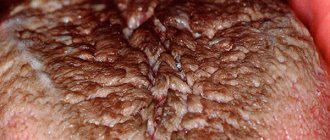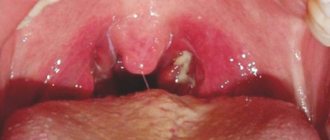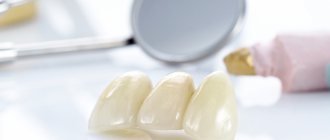September 30, 2020
108
10
Interesting Facts
The world's population speaks approximately 7,000 languages. Linguists not only study them separately, but also compare them with each other, finding common characteristics and making classifications.
There are two main classifications of languages: genealogical and linguistic. Genealogical is based on the relationship between languages. Throughout history, languages are divided and changed, but retain characteristics of a single origin, on the basis of which scientists identify language families and groups.
Linguistic classification or typology is based on all kinds of linguistic patterns that appear in any languages, regardless of their relationship.
Genealogical and linguistic classifications are not related to each other. Languages may belong to the same group, but belong to different categories in the typology, or have many common features, although they come from different parts of the world and different language families.
In this article we will talk about what place English occupies in linguistic typology - what its main features are, what languages it is most similar to, and how it differs from others.
Sagging skin on the cheeks
Seeing the difference between a relaxed cheek and a firm cheek is the hardest thing you will ever learn. But if you learn to feel how the cheek muscles contract and how they relax, you can tone them, and they will “listen” to you.
In men and women, the first sign of aging is a crease in the jaw line that really shouldn't be there.
To fully understand the ugliness of sagging cheeks, you first need to understand the importance of having cheeks on your face.
The muscle groups under the cheeks play an important role in everyday life, they help to chew food, and the question is, are the cheeks “bags” for food, for storing it (like hamsters or chipmunks)?
HOW we eat and WHAT we eat actually most directly affects the movements performed by the muscles of the face (and cheeks as well).
If you are used to stuffing large amounts of food into your mouth, then, of course, some of the food will accumulate behind the cheeks on the side of the jaw.
Many people do exactly this their entire adult lives. They stuff as much food into their mouths as they can fit, forgetting that their teeth need room to chew food.
When chewing food, two-thirds of it is behind the cheeks. This causes the cheeks to stretch, and eventually the cheeks end up looking like empty bags when there is no food in them.
The best thing is to put food in your mouth in small portions, chew it thoroughly and swallow before the next portion follows.
In civilized countries, this is exactly what children are taught, but if you come to a restaurant and look around, you will be amazed at what you see.
How we eat
I suggest you one day, when you are alone at home, sit in front of the mirror and watch how you eat.
Watch the movements of your cheeks, mouth and jaw.
Remember which movements from the outside may look pleasant and which may look ugly.
For example, if you have holes in your teeth, food will get stuck there.
Have you noticed that one corner of your mouth curls when your tongue begins to pick out food debris trapped in the bags between your teeth and jaw?
Try to keep food within the boundaries of your teeth. Everything that ends up outside this boundary is excess food that has entered the mouth.
The amount of food in the mouth should be such that it fits in the oral cavity with the jaws closed.
Chewed food should occupy so much space in the mouth that it is easy to swallow it without resorting to the help of a drink.
Preferably, each serving of food that goes into your mouth should consist of 60 to 70 percent salads, vegetables and fruits, which contain juice that helps moisten other carbohydrates (for example, bread, rice, pasta) as you chew.
The better the food is moistened with the juices contained in the food, digestive enzymes and saliva, which are much more effective lubricants than any glass of wine, beer or glass of water, the easier it is to swallow.
If your diet is well balanced, you don't necessarily need to drink liquid with your meals. Any food is good only if it contains a sufficient amount of juices.
If you chew your food thoroughly, you won't need extra liquid to swallow it. It is always better to drink liquids after meals.
So remember: always put a small amount of food in your mouth, just enough to keep your facial movements attractive while eating. Once excess food ends up behind the cheek (or both cheeks), the shape of the face becomes distorted and you may see a caricature of yourself.
If you don't give up the bad habit of stuffing large amounts of food into your mouth, you'll end up looking like a hamster with saggy cheek pouches.
Let's tidy up our cheeks
Exercise 1. Relax your cheeks
Lie on the floor on your back, bend your knees and relax.
If your cheeks were tissue pinned to the bones of the skull, then it would turn out that there are only four pins, which are located in four points: one of them is on the outside of the temple, the other is just below the inner corner of the eye, the third is in the lower corner of the jaw. bones, and the fourth - just above the upper lip (see photo 45).
Photo 45: Cheek support points
Remember where these points are located. These are the most important "geographical points" on the map of the "terrain" of your person.
When you lie on the floor, try to remember where exactly these points are located.
The condition and correct location of the skin of the cheeks between these points will prepare you for a relaxation session.
1. Turn your head to the right to a comfortable position. Thus, the left cheekbone will be in the highest possible position.
2. Concentrate your attention on the highest point of the cheekbone, imagining that it is soft and relaxed, that the skin covering it is very smooth, that the cheek is a sand dune on the seashore, it literally melts under the sun's rays in the warm summer wind.
Gently relax that cheek, watching as the tension “slides” down the cheek to its lowest point.
3. While doing all this, take a deep breath and count to 10, and then slowly exhale the air.
4. Slowly turn your head to the right and then to the left. Remember what a relaxed cheek should be like. Constantly compare the sensations you experience when working with your right and left cheeks.
5. Now turn your head to the left and repeat the relaxation session with the other (right) cheek.
Pay special attention to the area located near the corner of the mouth. At the same time, be careful not to bite the inside of your cheek and keep your tongue level.
While in this position, pay attention to how you feel on the other side of your face, which is lying on the floor, and watch how it begins to sag more and more towards the floor (like an empty bag).
Once you learn how to do this relaxation exercise properly, you can easily isolate and tone muscle movements on different sides of your face.
Exercise 2. Alternating tension of the cheeks
Remain in the same relaxed position. The head is turned to the left. Now relax your shoulders and neck.
1. Look at both cheeks at once. Try contracting the cheek muscles on one (right) side while relaxing the same muscles on the other (left) side. In this case, the side on which the muscles contract should be on top. Your task is to pull it up by contracting the muscles and thus prevent the cheek from sagging.
If it becomes difficult to tense the muscles on one cheek, imagine biting the inside of that cheek. However, you certainly don't have to do it for real. The sensation should be about the same, but much less intense.
If your cheek is seriously sagging in this position, you may experience more intense sensations.
Use your hand to support your cheek without letting it sag, feel how your cheek tenses as you contract the muscles, pulling your cheek up, how it becomes more elastic and firm under your palm.
Do as many contractions as you can. Work until you feel tired, which usually appears after performing 30 to 50 movements.
2. When you feel that your muscles are tired, make sure your breathing becomes deeper. This will give you the energy to do a few more moves.
3. Finish the exercise by speeding up the movements to such an extent that they become very short, but at the same time very fast, so that the cheek just “wants” to remain in this raised position.
4. Repeat the exercise with the other cheek. Do the same number of repetitions, although if you feel that one cheek needs more work, you can work on it more. Remember that you must constantly monitor your breathing and relax before you begin to work on the other cheek.
Make sure to use both cheeks and keep one cheek relaxed while the other is actively working.
You work on the cheek that is at the top and tone the muscles on that side.
Exercise 3. Contract the cheek muscles
The contraction of the cheek muscles in this exercise is similar to what you did in the previous one, but the movement is more intense.
You can do this exercise lying down, standing, sitting, or even standing upside down.
In each position, the cheek muscles are worked differently. It follows from this that each time you need to perform the exercise in a different position.
This will help strengthen your cheek muscles much faster than if you constantly work in the same position.
Changing body position will also have different effects on the entire body during the exercise.
In addition, it will be more interesting to practice if you work the cheek muscles in a different position each time.
In this position, you contract the muscles of the cheeks in such a way that they affect all four main points that you see in photo 48. Contract the muscles gradually for a count of eight.
1. Contract your cheek muscles and hold them in this position for a count of eight.
2. Gradually release the muscles. Count to eight again.
3. Completely relax your cheek muscles and hold them in this relaxed state for a count of eight.
To get a feel for what the muscle contraction should feel like, try imagining an invisible force pulling your cheeks in four directions at once toward each of the four reference points (Plate 45).
Place your fingers on each of these points simultaneously, using both hands. Do not press your fingers into the skin. The fingers are there to simply indicate the direction in which the cheek is stretched.
4. Perform the exercise on the other side. Once you have learned how to contract one cheek properly, try contracting the muscles of both cheeks at the same time without using your hands.
Once you can feel the muscles in your cheeks, you can move on to the following exercises that will strengthen these muscles.
Exercise 4. Tongue behind cheek
Photo 46: Tongue behind cheek
Stand in front of a large mirror where you can see yourself in full length. Round your lips so that they take the shape of the letter "o". At the same time, make sure that your upper lip does not wrinkle.
The task is to, while maintaining the shape of the lips, stretch them slightly to the sides and pull them up, depicting a slight smile.
1. Press your tongue against the inside of your cheek and pull your cheek closer to your tongue to press them closer together.
2. Then start moving your tongue along the inside of your cheek, pressing it to it in one place or another, and each time try to keep the cheek pressed to the tongue and the tongue to the cheek.
3. Next, make about 20 movements on each side (cheek), often changing the position of the tongue, thus working the muscles in different places.
In this exercise, the tongue is a pressure point on the inside of the cheek, which should be pressed more tightly against the tongue.
In addition to the fact that in this exercise the tongue serves as a support for the cheek muscles, it stretches upward from the very base, which, in turn, provides additional benefits, as it tones the part of the face that is located under the jaw and is called the second or even third chin.
This exercise helps to work out many different small muscle groups, and as a result, the cheeks become firm and smooth, which gives the whole face the charm of youth and health.
Exercise 5. Dimples
Photo 47: Dimples on the cheeks
One of the most effective exercises for toning sunken or sagging cheeks, which often spoil the face, is the “dimples on the cheeks” exercise.
1. First, shape your lips into an “o” shape, and now smile and say “r-r-r-r-r.”
2. While making this sound, contract the muscles of the lower front part of the cheeks, causing them to move up and inside the open mouth.
3. Gently press your fingers against your cheeks as shown in Photo 47 to feel these muscle groups contract.
4. Do about 50 small movements or more to feel the muscles working under your fingers and determine when they become tired.
5. Now take a very deep breath and move your jaw to the right and left, then relax it and repeat the movements again.
Repeat the entire exercise three times.
I specifically ask that you practice this exercise as hard as possible so that you can feel those cheek muscles that need more attention if you want to get rid of sagging or sunken cheeks that age your face.
When you feel good about how these muscles work, you can move on to the next exercise.
Stage 1: Basics. Where to start learning English
At this stage, you need to understand the basics of the language, be able to read and write, speak simple sentences and be able to construct sentences correctly. To do this you need to take 6 steps:
1. Learn the alphabet. The English alphabet is quite easy to learn, since it is based on the Latin alphabet and consists of only 26 letters.
2. Understand the basics of English sentence construction and, especially, word order in a sentence and inversion. Pay special attention to negative and interrogative sentences. It would also be a good idea to know the principles of constructing negative questions.
3. Study the basic tenses of the English language that are used most often. Namely:
Present Simple Past Simple Present Continuous Future Simple Past Continuous Present Perfect
There are 12 tenses in total in the English language, but these 6 basic tenses are enough to get you started.
4. Work on pronunciation, understand the transcription of sounds and reading rules.
5. Study numerals.
6. Have a vocabulary of 500–1000 words and know the table of irregular verbs.
This stage is the most difficult, it is here that most problems arise, since students do not fully understand the principles of the functioning of the language, its grammar, and there are huge problems with pronunciation. After you have studied the alphabet, familiarized yourself with the principles of constructing sentences and at least reviewed the tenses used, it is recommended to take an English language course. You can learn grammar on your own, but the courses will give you speaking practice, and working in groups can be more interesting than working on your own.









